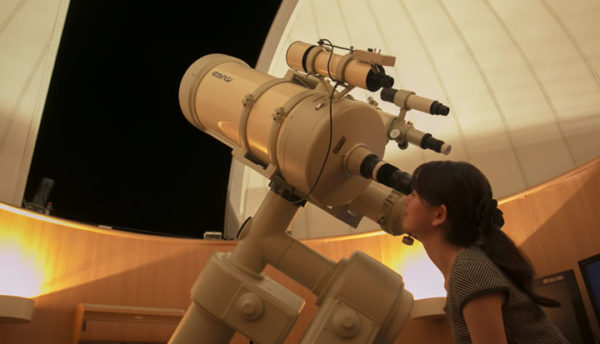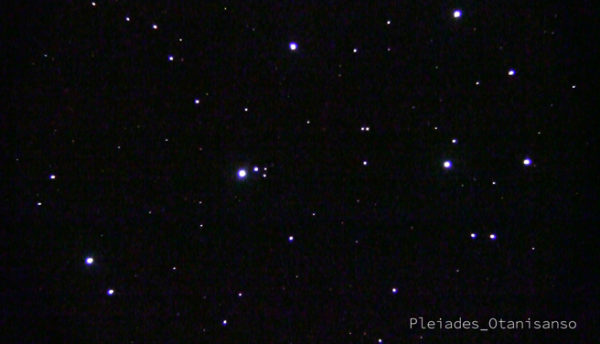- Astronomical Observatory
- 2019/08/27
【August in the Observatory】Look up with your children and try to find the Summer’s Great Celestial Triangle!
How best to locate Summer’s Great Celestial Triangle? Three stars shimmering in the southeast: Altair (red), Vega (blue), and Deneb
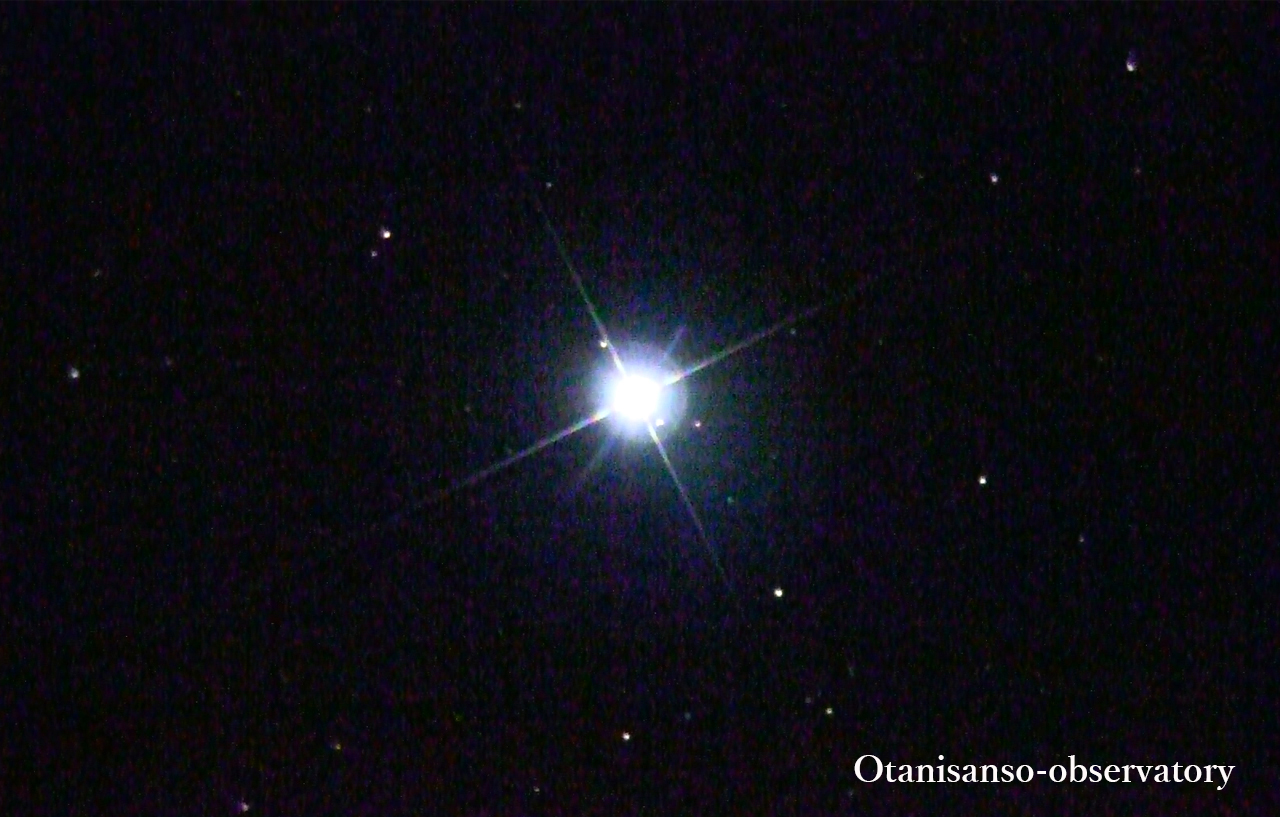 Greetings from the Otani Sanso Astronomical Observatory Dome.Today we’ll be discussing what’s visible in Nagato Yumoto Onsen’s night skies in August, 2019. (Image: A photograph of Vega taken through the telescope at Otani Sanso’s astronomical observatory dome in the past)
Greetings from the Otani Sanso Astronomical Observatory Dome.Today we’ll be discussing what’s visible in Nagato Yumoto Onsen’s night skies in August, 2019. (Image: A photograph of Vega taken through the telescope at Otani Sanso’s astronomical observatory dome in the past)
Finding Summer’s Great Celestial Triangle
The summer skies are marked by the appearance of the “Great Celestial Triangle.” This constellation is very well known in Japan, where it is connected with the legend of the star-crossed lovers of “Tanabata.” The star Vega is Princess Orihime, and Altair her lover, Hikoboshi, and between them, where the Milky Way appears to flow, is Deneb. All three are first magnitude stars, easy to sight even in the city. Even so, you might have experienced looking up to the heavens and struggling quite a bit to do so… This might be because you were searching for a Great Celestial Triangle that’s much bigger than the real thing. Try looking very high up into the sky. *On an unrelated note, the Perseid meteor shower will be at its peak around August 13th. This year, however, the Perseids coincide with a full moon, which will make them difficult to see. You’ll truly be in for a treat if you’re able to see them. We hope you’ll be able to make some lovely summer memories, perhaps after an evening stroll, when you can stargaze with your family.- First, look high in the sky to locate the noticeably bright, white star, Vega. Vega is said to be the Princess Orihime.
- Next, from Vega (to the West), look across the way (to the East) to find the red star Altair. This is Hikoboshi.
- Finally, find the bright star Deneb in between Vega and Altair.
- All three of the stars above are first magnitude stars. If you connect the three, you’ll have found the Great Celestial Triangle.
Observe the Moon together with Jupiter and Saturn, for a lively night sky!
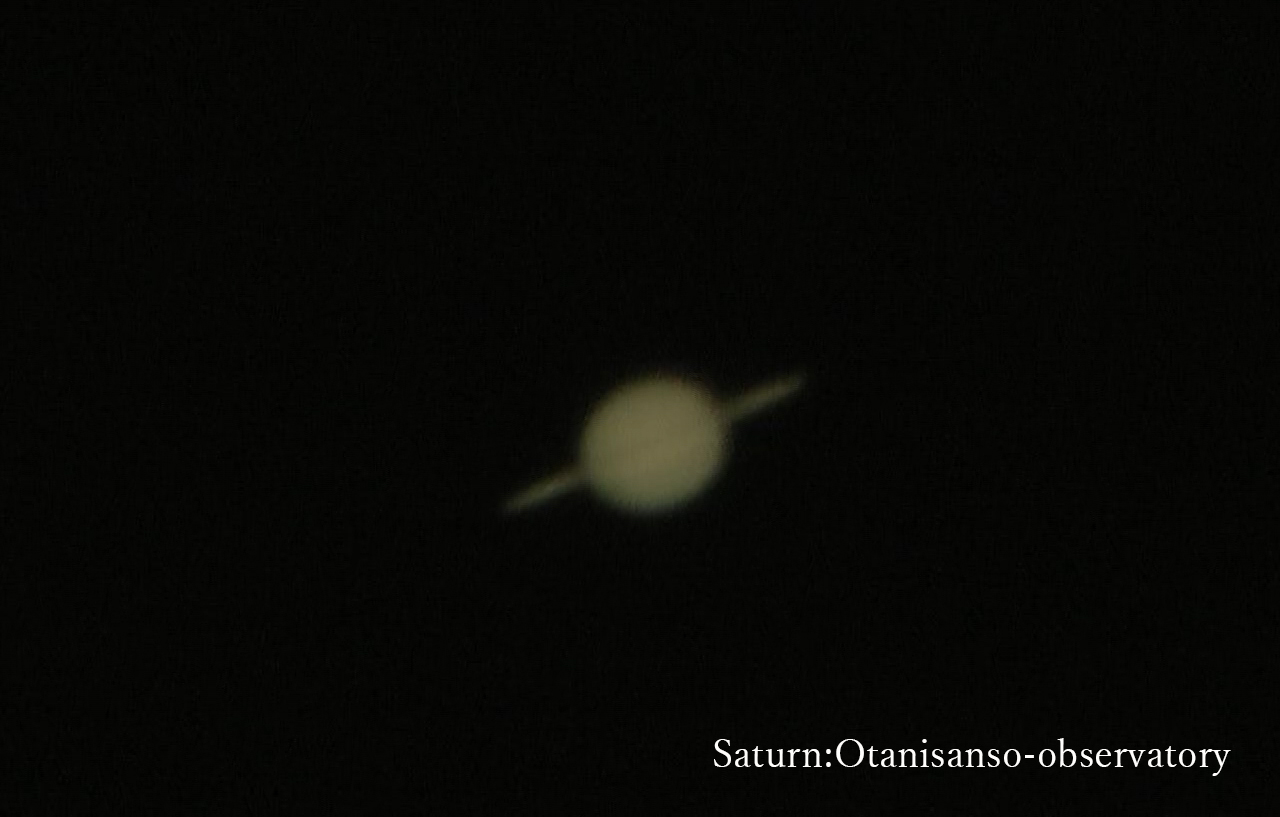 In August, too, we’ll be able to observe some exciting night skies, with Summer’s Great Celestial Triangle, and Jupiter and Saturn drawing close to one another as the moon waxes and wanes. This is because the moon revolves around the earth once a month. One of the delights of stargazing is that even though you may be looking at the same moon, you’ll see different scenery depending on the year, and the day. This is also the last month you’ll have an opportunity to observe Jupiter and Saturn. We invite you to stop by the astronomical observatory dome to take a look at Saturn’s rings and Jupiter’s four Galilean moons.
In August, too, we’ll be able to observe some exciting night skies, with Summer’s Great Celestial Triangle, and Jupiter and Saturn drawing close to one another as the moon waxes and wanes. This is because the moon revolves around the earth once a month. One of the delights of stargazing is that even though you may be looking at the same moon, you’ll see different scenery depending on the year, and the day. This is also the last month you’ll have an opportunity to observe Jupiter and Saturn. We invite you to stop by the astronomical observatory dome to take a look at Saturn’s rings and Jupiter’s four Galilean moons.
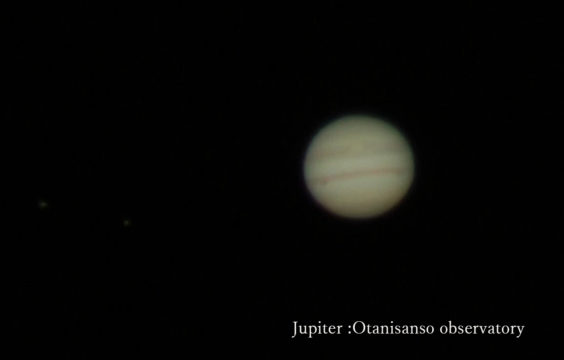
■What causes a meteor shower (shooting stars)?
Shooting stars are caused when astronomical debris enters our atmosphere, and creating a glowing effect as they are burned up. The following explanation is found on the National Astronomical Observatory of Japan Official Website:Meteors (also known as “shooting stars”) are pieces of astronomical debris, ranging from 1 milimeter in diameter to several centimeters, which come flying our atmosphere with great force, causing them to become extremely hot and burn up, creating their brightness.(For more: The National Astronomical Observatory of Japan Official Website)
Information about the stars in August
Expected Stellar Observations
- August 1 (Thu) – 5 (Mon): Jupiter, Saturn, Vega, Altair
- August 6 (Tue) – 16 (Fri): Moon, Jupiter, Saturn, Vega
- August 17 (Sat) – 31 (Sat): Jupiter, Saturn, Vega, Altair
- August 1 (Thu) …New Moon
- August 7 (Wed) …”Tanabata” (Vega and Altair)
- August 8 (Thu) …Waxing Moon
- August 12 (Mon) …the Moon and Saturn will draw close
- August 13 (Tue) …peak of the Perseids (meteor shower)
- August 15 (Thu) …Full Moon
- August 23 (Fri) …Waning Moon
- August 30 (Fri) …New Moon
Please check the National Astronomical Observatory of Japan website for sunset times in Yamaguchi Prefecture. (See: National Astronomical Observatory of Japan Website)
Making a Reservation at the Astronomical Observatory
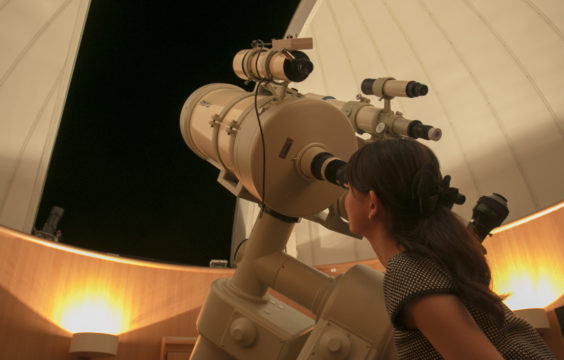
Details
- Observatory Hours… 7:30 p.m. – 10:10 p.m.
- Closed on… Every Tuesday
- Location… Otani Sanso Roof (Just beside the gallery on the 8th floor)
- Price… Free for overnight guests (Viewings available to those who reserve first)
- Using the Observatory… Viewings are available to those who reserve first (12 seats per viewing)
Observation Times
- 7:30 p.m., 7:50 p.m.
- 8:10 p.m., 8:30 p.m., 8:50 p.m.
- 9:10 p.m., 9:30 p.m., 9:50 p.m.
How to Make a Reservation
Please inform us of your desired reservation time from the times listed above (Please tell us via telephone, or write it in the “requests” field) *You may not be able to participate in a viewing if a time slot is fully booked, or due to weather conditions. *Should you be unable to participate in a viewing due to weather conditions, you will be able to see a video from a past viewing.See information from the astronomical observatory dome
■Frequently Asked Questions "Why is there an astronomical observatory on the roof of Otani Sanso?" The president of Otani Sanso, a great fan of the poems of Nagato/Senzaki-born Kaneko Misuzu, built the observatory out of a desire to "share the beautiful stars of Nagato with our guests, too." In fact, it was through a chance meeting via the Kaneko Misuzu Exchange Association that the president met with Dr. Haoru Saji, who greatly affected the president with the beauty of the stars he could see from the observatory at Tamagawa University even during the daytime. "There's much more than your eyes can see," Dr. Saji told him. "Let's take a look at the daytime stars." When you look up at the starry skies of Nagato, here, surrounded by nature, we hope you'll make memories to take home with you that you can look back on fondly.
Night Sky Trivia
The Speed of Light
- Light moves at a speed of approximately 300,000 km per second (7.5 revolutions around the Earth), and can cover 9.46 trillion km in a year.
- It takes light from the sun 8 minutes and 19 seconds to reach the earth.
- It takes 8 minutes and 19 seconds for light from the sun to reach the Earth.
Distances in Space
- Because space is so vast, we use “light years” and “astronomical units (AU)” to describe the distances between stars.
- 1 light year = the amount of distance light can travel in one year (9.5 trillion km)
- 1 astronomical unit = the distance between the sun and the Earth (approx. 150 million km)
Earth Time
- There are 24 hours in one day, but it takes 23 hours and 56 minutes for a rotation of the earth, leaving a margin of 4 minutes.
- The reason we have “leap years” is because the Earth’s orbital period around the sun is just shy of 365 Earth days.
- 1 rotation of the Earth (23 hours 56 minutes) = 400 m/sec
- 1 revolution of the Earth (365 days) = 30 km/sec
If you’d like to see more information about the night skies, the National Astronomical Observatory of Japan is extremely interesting. Please take a look.
